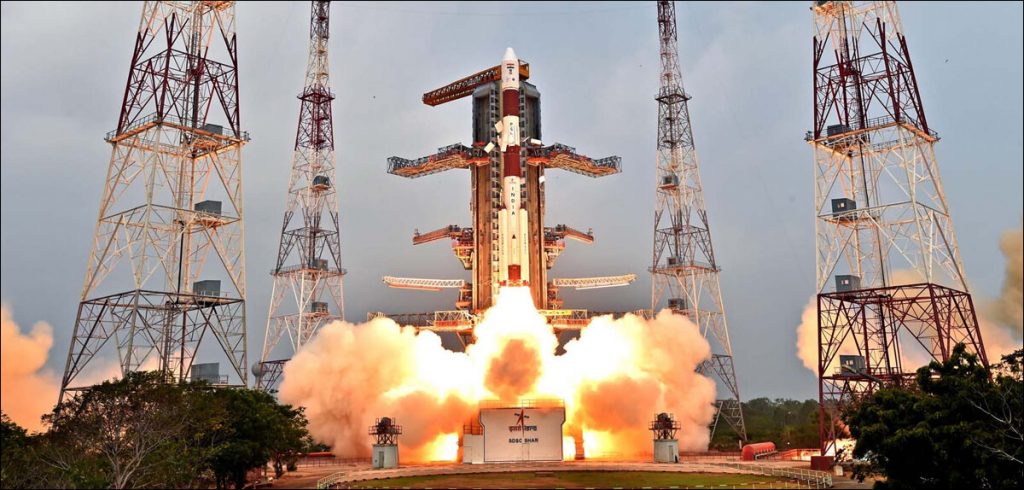ISRO has had 34 launches in the last decade, successfully sending up 121 satellites, 75 of them foreign. Uma Iyer finds out how this Indian juggernaut went international.
The Indian Space Research Organization, or ISRO has come a long way since its humble beginnings of requesting other countries to launch its first Satellite Aryabhata in Russian soils to be at the forefront of international collaborations. It not only challenged the costs levied by the big wigs of NASA and all other coveted international counterparts, it now has done what the Indian market does best, launch satellites in wholesale.
OneWeb, the United Kingdom based communications company was initially supposed to launch its satellites through a Russian Space agency, however, tables have turned and they turned to the dependable ISRO instead. The Russia-Ukraine war saw the British Government sell its stakes to a non-Russian government-backed company as the satellites may well be used against them.
While the highest launches have been with companies from the US, ISRO is soon starting to be a contender in this space by launching 384 foreign satellites from at least 36 countries, with at least 10 dedicated commercial missions and several other Indian missions where they were carried as co-passenger satellites.

Why ISRO?
It was a mutually collaborative and helpful endeavor. The experiments with the winged RLV-TD were towards developing essential technology for reusable launch vehicles and giving low cost access to space much like SpaceX. The RLV-TD will be used to develop technologies like hypersonic flight (HEX), autonomous landing (LEX), return flight experiment (REX), powered cruise flight, and Scramjet Propulsion Experiment (SPEX)
Sunil Bharti Mittal, executive chairman of OneWeb, said: “India stepped up, when we needed them the most. We had a big setback with the Russia-Ukraine war – six launches that were contracted and fully paid for were taken out. Now, not only OneWeb is struggling to get the money back, it has also lost 36 satellites, three very valuable, and importantly lost nearly a year.”
ISRO’s mission in numbers

Bharti and OneWeb
“The $15 billion Bharti Telecom becomes the first company to offer both terrestrial and satellite broadband services where they own 40% of the OneWeb stake. OneWeb’s high-speed, low-latency solutions will assist in connecting communities, businesses, and governments worldwide, demonstrating the unparalleled potential of LEO (low earth orbit) connectivity,” the company said in its press release, also stating it would help India’s “towns, villages, municipalities, and schools, including the hardest-to-reach areas across the country,” Mittal had said.
Europe did not have a functional airspace where Ariane 5 had retired and the newer variant was not ready in time. So the real contenders of over 600 satellites were SpaceX or ISRO. SpaceX’s starlink launched some of the One-Web satellites while ISRO’s LVM3 launches completed the rest of the 72.
Marking the eighteenth launch of OneWeb satellites this brings the constellation’s total number of satellites to 618 where the company intends to use 588 active satellites in its first-generation constellation to provide global connectivity at high speed and low latency.
What are heavy rockets?
There are Small Satellite Launch Vehicle (SSLV), which satisfy the on-demand launch services and with low turn around time and costs much lesser than Polar Satellite Launch Vehicle (PSLV).
Till date, ISRO has launched 384 foreign satellites from at least 36 countries, with at least 10 dedicated commercial missions and several other Indian missions where they were carried as co-passenger satellites. The highest number of these commercial launches have been by companies from the United States. The Launch vehicle size is dictated by the destination it is headed towards, the kind of fuel – solid, liquid, cryogenic, mix – and the size of the payload.
‘The LVM-3 is actually a repurposed version of the country’s heaviest launch vehicle, Geosynchronous Launch Vehicle Mark-3 (GSLV-Mk3), for the deployment of OneWeb’s LEO satellites at an altitude of 1,200 km. The geosynchronous orbit is located much further away at about 36,000 km from the Equator. The satellites totalling about 5,805 kilos were placed in a 450 km circular orbit with an inclination of 87.4 degrees. It was the sixth launch for India’s heaviest rocket LVM-3 – which includes the launch of Chandrayaan-2 in 2019 – and the second one where it demonstrated the capability of launching multiple satellites in low earth orbit (LEO).’ ISRO
Commercial space ventures – The future of ISRO
These launches have been key in ensuring that LVM3 is viewed as a dependable yet profitable in the market for commercial heavier launches with circa Rs 1000 crores. With this the funding is no longer an issue and plans of increasing the market share from a merge 2% to 10%. This gives way to many private companies like Skyroot and Agnikul.
ISRO’s commercial arm New Space India Limited, created in 2019, have recorded 100% increased revenue from Rs 1,731 crores in 2021-22 to a projected Rs 3,509 crores in 2023-24. The NSIL report added, “The Committee appreciates the achievements of NSIL in such a short period of time and recommends the Department to provide all support to NSIL to enable it to act as an agency of international character and quality.”
In case you missed:
- None Found









